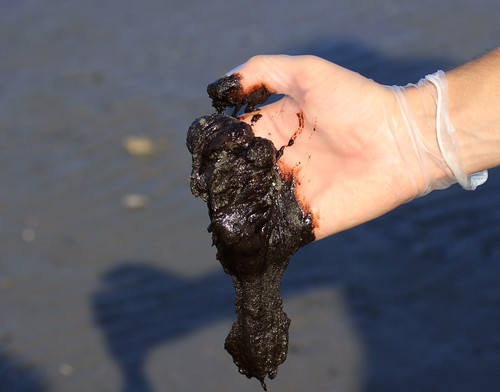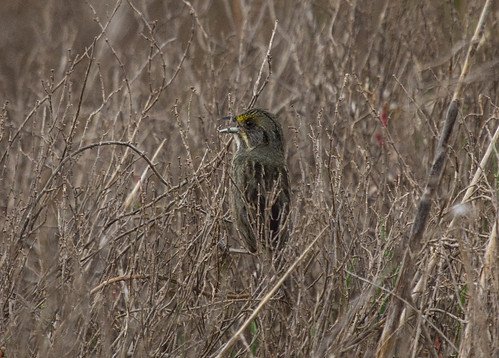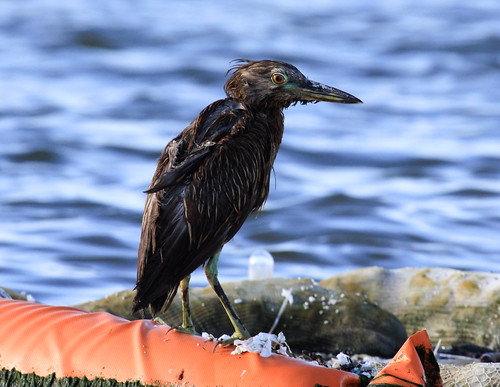 |
In previous oil spills, when responsible observers observed oiled birds, mammals, and turtles, they included them in official numbers, which were as honest an assessment of the “oiled wildlife” after a spill as was humanly possible. This was the method used to assess the wildlife damage after the Exxon Valdez and in every other oil spill right up to the BP spill.
Yet in 2010, somehow, BP persuaded the US Fish and Wildlife Service to include in the official numbers only those animals that had been actually retrieved, and they made retrieving them as difficult as possible, again with the US Fish and Wildlife Service’s sanction. They prohibited the retrieval of any flying birds, regardless of how badly they were oiled, and regardless of how feeble their attempts at flight might be, making the ridiculous case that the trauma of capture was more likely than the oil to kill the birds.
When I was on a boat chartered to explore the damage in Barataria Bay, we came upon a badly oiled Black-crowned Night-Heron that feebly opened its wings and jumped a couple of feet before falling into the water and shuffling to shore. Our boat captain said if he helped the bird, he’d lose his license and livelihood.
When we chartered a flight over Raccoon Island, where a large nesting colony of waders and pelicans had been devastated, we saw pelicans prostrate on the ground, wings spread. Not one was rescued or counted—even after 80 percent of the colony had been oiled, US Fish and Wildlife prohibited capture of any of the birds, ostensibly for fear of disrupting the nesting, even though they’d always permitted people to climb to nests in the past to band chicks, causing at least as much disruption to breeding birds.
There was also documented evidence that people were burning carcasses to keep those numbers down, but there was no governmental investigation of that whatsoever.
In addition to keeping numbers low to minimize the fines related to wildlife damage and the massive public relations fallout if the true number were revealed, BP also managed to impose a strict 5-year moratorium on publication of most of the research happening after the spill. Finally some of the papers are seeing light. One published last month in the journal Environmental Research Letters reveals that the oil continues to harm birds even now, six years later.
 |
| Seaside Sparrow |
Researchers discovered that oil from the BP spill was already being found in the tissues of Seaside Sparrows by 2011, indicating that the spill’s impacts had worked up the terrestrial food chain as well as the aquatic one. Researchers also noticed a decline in Seaside Sparrow breeding success in 2011, after fairly steady increases in recent years. That decline has been steep and without check along Louisiana shores ever since 2011, according to Breeding Bird Survey graphs.
| The lower graphs show the Louisiana population of Seaside Sparrows, based on Breeding Bird Survey data. Notice the steep decline from 2010 to 2011. |
I’m not sure what we can or should be doing with information about the continuing toll of an oil spill that happened 6 ½ years ago when there are so many other problems right now to solve. But somehow, attention must be paid.
